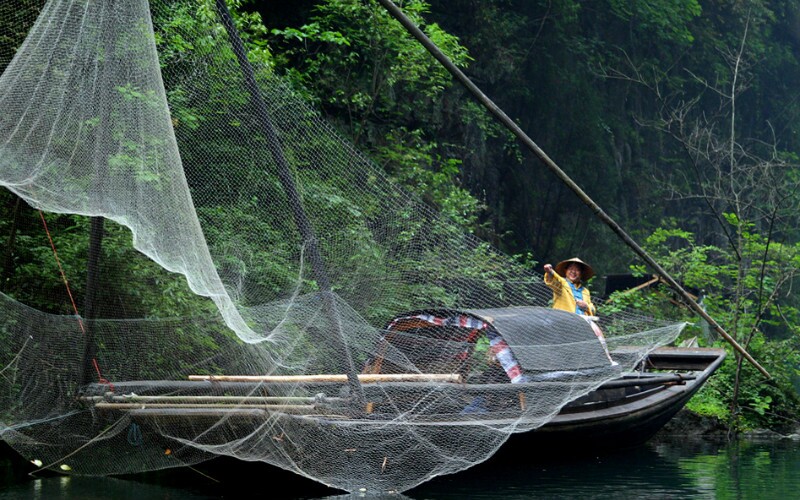Yangtze River plays an important role in China's history and culture. It has a long history of more than 2 million years. Many culture heritage sites are located along the Yangtze River, like Fengdu Ghost City in Chongqing.
Yangtze History

The Yangtze River has an important place in Chinese history. Traces of human activity in the area have been dated as far back as 2 million years ago. In the Spring and Autumn Period of China (770-476 BC), the Ba and Shu tribes lived in the middle reaches of the river, now Sichuan Province, Chongqing Municipality, and western Hubei Province. The Chu settled in the lower reaches of the Yangtze, corresponding to today's Hubei, Hunan, Jiangxi, and southern Anhui provinces. The Wu and Yue tribes were located in the Yangtze Delta area, now Jiangsu, Zhejiang, and Shanghai.
The difficulty in crossing the river made it often the border of kingdoms and the place of fierce battles. Several dynasties and the Republic of China (1912-1949) had their capital in Nanjing, then the first bridging point and a strategic location on the Yangtze.
Yangtze Culture

There is a rich cultural heritage along the Three Gorges section, like the hanging coffins of the Lesser Three Gorges, the Cave of the Three Travelers and the Ghost City of Fengdu, which partly had to be resettled due to the rise in water level caused by the Three Gorges Dam.
Elsewhere on the Yangtze, the upper reaches are home to minority peoples like the Tibetans and Naxi of Yunnan, who live in remote mountainous areas.
The culture of the Sichuan/Chongqing Plateau and Hubei Plain on the Yangtze middle reaches, with its spicy food, Buddhist holy sites (the Giant Buddha, Mt. Emei, etc.) and relaxed pace of life, is different from that of the low-lying lower reaches.
Downriver from Wuhan the lakes, waterways and fertile alluvial plain are known as a land of fish and rice. Ancient towns, where the streets are canals thrived in the Qing Dynasty (1644-1911), and Hangzhou and Suzhou were winter retreats for the emperors.
The Development of Yangtze's Transport
 The surging Yangtze is now controlled by the Three Gorges Dam.
The surging Yangtze is now controlled by the Three Gorges Dam.The Changjiang (chang means long and jiang means river), or Yangtze has always been an important means of transport for goods into and out of China’s interior.
In the past, river travel was not easy, as the river had some dangerous reaches, rocks and wildly fluctuating water levels. Boats often had to be rowed through the most dangerous parts. Between June and September upstream traffic almost ceased completely, as winds were not strong enough to allow the junks to sail against the surging waters.
In the days before engines, men called “trackers” used to pull the ships manually up the Yangtze River. They literally crawled through the mud hauling on a rope slung round their bodies. You can see sepia photographs of this at a lecture on board the Victoria Line Yangtze River Cruise.
The modern era of Yangtze River travel started in 1900, when the British Paddle-Steamer S.S. Pioneer managed the upstream trip to Chongqing without the use of oars. The voyage was still not without danger, as the example of a German passenger steamer, which was smashed to pieces on the rocks the same year, shows.
Today a trip on the Yangtze, either upstream or downstream is as pleasant as it can be. Most of the ships are equipped with modern navigation and sea sickness is seldom seen, as most of the ships have motion stabilizers in their bellies. The Three Gorges Dam and Gezhou Dam have calmed the waters of the Three Gorges and the Yangtze downstream.







